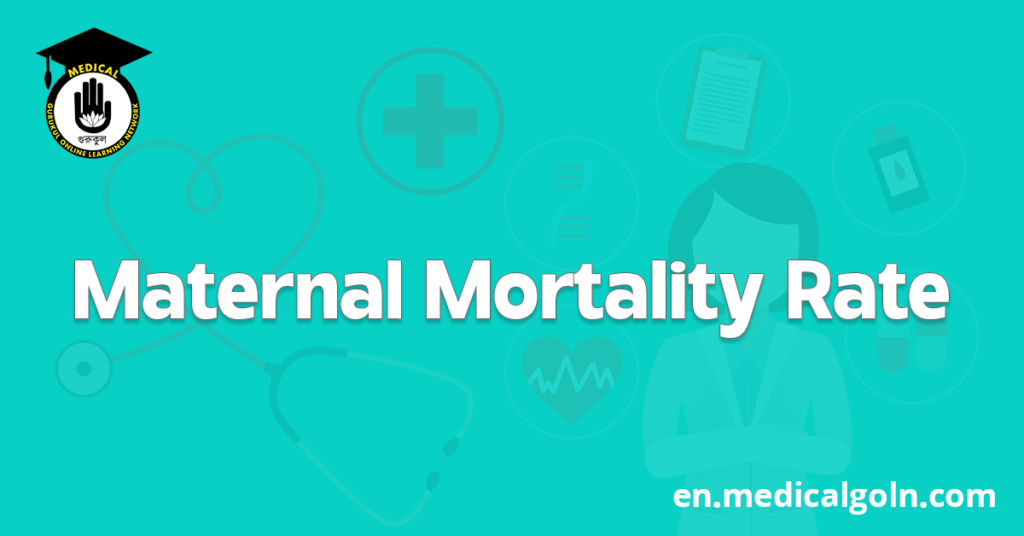Today is our topic of discussion Maternal Mortality Rate
Maternal Mortality Rate
Definition:
The maternal mortality rate (MMR) is the annual number of female deaths per 100,000 live births from any cause related to or aggravated by pregnancy or its management (excluding accidental or incidental causes).
The MMR includes deaths during pregnancy, childbirth, or within 42 days of termination of pregnancy, irrespective of the duration and site of the pregnancy, for a specified year.
[According to MDG-5, the goal of government of Bangladesh is to reduce MMR from 570 per 100,000 live births in 1990 to 143 (i.e. to reduce three-fourths) by 2015. At present, MMR is 240
deaths/100,000 live births (2010)]
Number of deaths of mothers due to pregnancy ralated causes upto
the end of puerperium in an area during a year
MMR = ——————————————————————————————— × 1000
Number of live births in the same area and same time interval
Causes of high maternal mortality (MMR) in Bangladesh:
Preventive measures to reduce MMR:
1. Early registration of pregnancy
2. At least three antenatal check-up
3. Dietary supplementation, including correction of anaemia
4. Prevention of infection and haemorrhage during puerperium
5. Prevention of complications, e.g., eclampsia, malpresentations, ruptured uterus.
6. Treatment of medical conditions, e.g., hypertension, DM. tuberculosis
7. Tetanus prophylaxis
8. Clean delivery practice
9. Institutional delivery for women with bad obstetric history and risk factors
10. Promotion of family planning activities
11. Identification of every maternal death and searching for its cause
Trained/Skilled Birth Attendant:
The term ‘trained birth attendant’ or ‘skilled birth attendant’ refers to people with midwifery skills who have been trained to proficiency in the skills necessary to manage normal deliveries and to diagnose or refer obstetric complications.
See also :

